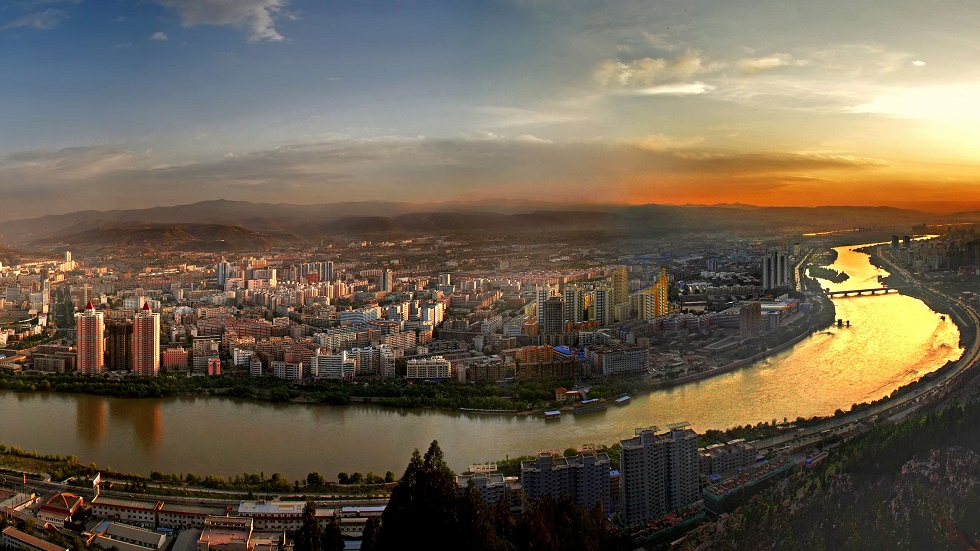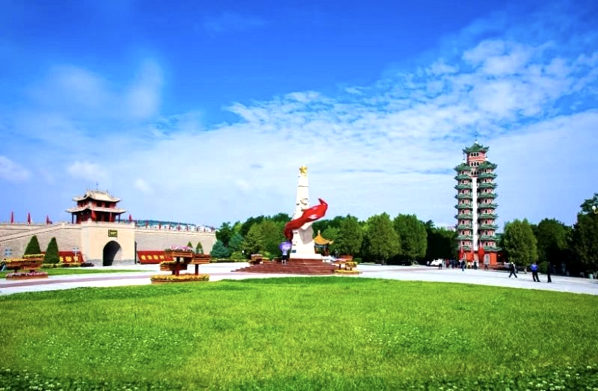- Profile Jurisdictions GOV DEPARTMENTS Cultures Travelling Educate
-
Gansu, historically part of Yongzhou, lies along the upper reaches of the Yellow River. It borders Shaanxi to the east, controls access to Bashu and Qinghai to the south, adjoins Xinjiang to the west, and commands Inner Mongolia and Ningxia to the north. This region served as the pivotal gateway and golden corridor of the ancient Silk Road.
Like a magnificent gemstone, it is set upon the Loess Plateau, Qinghai-Tibet Plateau, and Inner Mongolia Plateau in central China, stretching over 1,600 kilometers from east to west. The province covers a total land area of 425,800 square kilometers.

The name Gansu is derived from the first characters of Ganzhou (present-day Zhangye) and Suzhou (present-day Jiuquan). It was abbreviated as Gan during the Western Xia dynasty when the Gansu Military Command was established, and again during the Yuan dynasty when Gansu Province was formally established. As most of the province lies west of the Long Mountains (Liupan Mountains), and the Tang dynasty once established the Longyou Circuit here, it is also abbreviated as Long.
Most of Gansu lies above 1,000 meters in elevation, encircled by towering mountain ranges. To the north are the Liupan Mountains, Helishan Mountains, and Longshou Mountains; to the east are the Min Mountains, Qinling Mountains, and Ziwuling Mountains; to the west are the Altun Mountains and Qilian Mountains; and to the south lies the Qingni Ridge. The terrain is highly complex, characterized by undulating elevations, continuous mountain ridges, and rushing rivers. Here, snow-capped peaks pierce the clouds, boundless grasslands stretch as far as the eye can see, vast deserts and Gobi seas stretch endlessly, lush secondary forests thrive, mystical emerald lakes and springs sparkle, natural scenery reminiscent of southern China unfolds, and unique flowers and auspicious fruits of the northwest flourish.
Tianshui City and the Longnan region in southeastern Gansu are a naturally fertile land with a long history, beautiful mountains and rivers, abundant resources, a pleasant climate, and unique folk customs. It is known as the “Little Jiangnan.”
Legends surrounding Xuanzang's journey in Tianshui have transformed sites like Fogongjiao, Wanzishan, and Shenjin Temple into major folk tourism attractions. Adjacent to Tianshui and Longnan, the Gannan and Linxia Tibetan Autonomous Prefectures serve as hubs for Tibetan, Hui, Dongxiang, Ba'an, and Salar ethnic groups. The region boasts distinctive folk customs and traditions. Labrang Monastery, located within these areas, not only features exquisitely crafted architecture but also hosts seven major religious assemblies annually alongside numerous festivals, making its religious and folk activities exceptionally rich and diverse. The ancient and elegant Linxia Mosque serves as the gathering place for Muslim congregations. Its religious and folk activities are uniquely grand and awe-inspiring.
The Qingyang and Pingliang regions in eastern Gansu are revolutionary base areas with a long history. Beyond numerous revolutionary relics, sites like Mount Kongtong—a Daoist holy place where the Yellow Emperor ascended and Guangchengzi attained enlightenment—Mount Wangmugong where the Queen Mother of the West hosted Zhou Mu Wang, and temple fairs at Gong Liu Temple and Pusa Mountain have become hubs for folk culture and economic exchange. Folk arts like suona music, paper-cutting, shahuo folk performances, and traditional opera hold particular charm.

The Hexi Corridor, Gansu's renowned breadbasket, was once a battlefield of ancient warfare and a vital artery of the Silk Road. World-renowned attractions include the folk customs of Dunhuang's Mogao Caves, the Yugur ethnic traditions of Southern Gansu, the Mongolian culture of Northern Gansu, the Akesai customs, the Tibetan traditions of Tianzhu, the marvels of Leitai, the ancient legends of Jiuquan, the myths of Jiayuguan, the historic Yumen Pass and Yangguang Pass, the human-skin drums of Qiaowan, folk banquets, camel caravans, and other unique customs all shine brilliantly here.
Gansu is a province where both development potential and challenges are prominent, with distinct advantages and disadvantages. Through development and construction since the founding of the People's Republic, it has established an industrial system centered on petrochemicals, nonferrous metallurgy, and mechanical electronics, becoming a vital national base for energy and raw materials industries. Agricultural foundations have improved, achieving basic self-sufficiency in grain production. Strategic leading industries like grass-fed livestock, potatoes, fruits, and vegetables have taken shape, alongside regionally advantageous sectors such as seed production, medicinal herbs, and beer ingredients. Local specialty industries and products—including edible lilies, bulbous flowers, daylilies, Sichuan pepper, and olive oil—have also flourished. Education and science have made significant strides, with 34 regular universities and 22 central government-affiliated research institutions now operating in the province. Cultural endeavors continue to advance, with dance dramas like “Silk Road Flower Rain” and “The Great Dream of Dunhuang” gaining global acclaim, and Reader magazine becoming China's highest-circulation periodical.
contact details
Tel:00-86-0931—8929080
Address:One Central Plaza, Chengguan District, Lanzhou City, Gansu Province, China
Working hours:8:30 a.m. - 12:00 p.m. 14:30 p.m. - 18:00 p.m. (except weekends and holidays)
